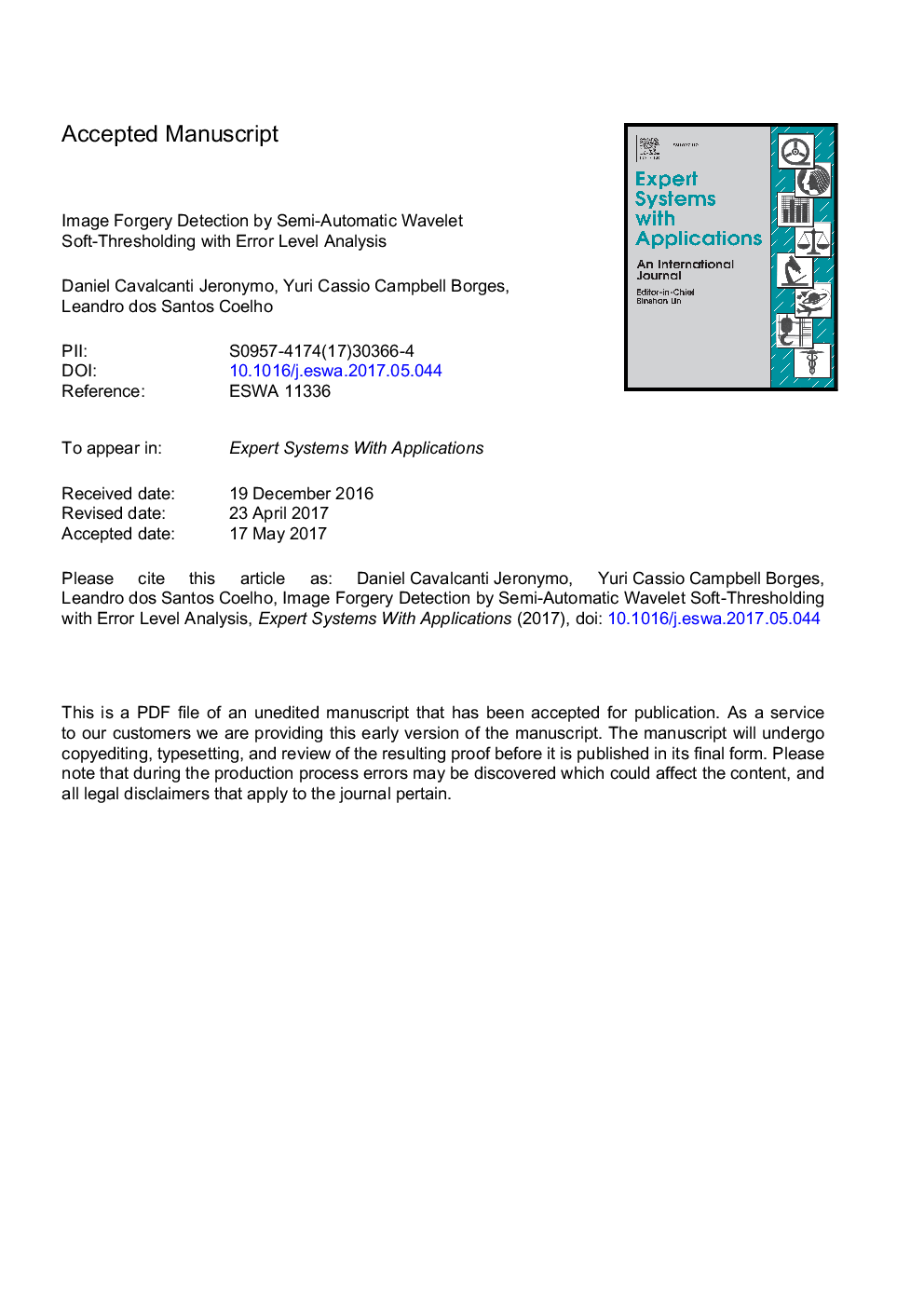| Article ID | Journal | Published Year | Pages | File Type |
|---|---|---|---|---|
| 4943161 | Expert Systems with Applications | 2017 | 27 Pages |
Abstract
In this paper a method for detection of image forgery in lossy compressed digital images known as error level analysis (ELA) is presented and it's noisy components are filtered with automatic wavelet soft-thresholding. With ELA, a lossy compressed image is recompressed at a known error rate and the absolute differences between these images, known as error levels, are computed. This method might be weakened if the image noise generated by the compression scheme is too intense, creating the necessity of noise filtering. Wavelet thresholding is a proven denoising technique which is capable of removing an image's noise avoiding altering other components, like high frequencies regions, by thresholding the wavelet transform coefficients, thus not causing blurring. Despite its effectiveness, the choice of the threshold is a known issue. However there are some approaches to select it automatically. In this paper, a lowpass filter is implemented through wavelet thresholding, attenuating error level noises. An efficient method to automatically determine the threshold level is used, showing good results in threshold selection for the presented problems. This automatic threshold level can be fine tuned by a parameter k. Standard test images have been doctored to simulate image tampering, error levels for these images are computed and wavelet thresholding is performed to attenuate noise. Results are presented, confirming the method's efficiency at noise filtering while preserving necessary error levels. The main contribution of this paper is the investigation of Daubechies wavelets with semi-automatic soft-thresholding in order to highlight forgeries in images. These results can be further extended by expert systems to classify and identify forgeries.
Related Topics
Physical Sciences and Engineering
Computer Science
Artificial Intelligence
Authors
Daniel Cavalcanti Jeronymo, Yuri Cassio Campbell Borges, Leandro dos Santos Coelho,
